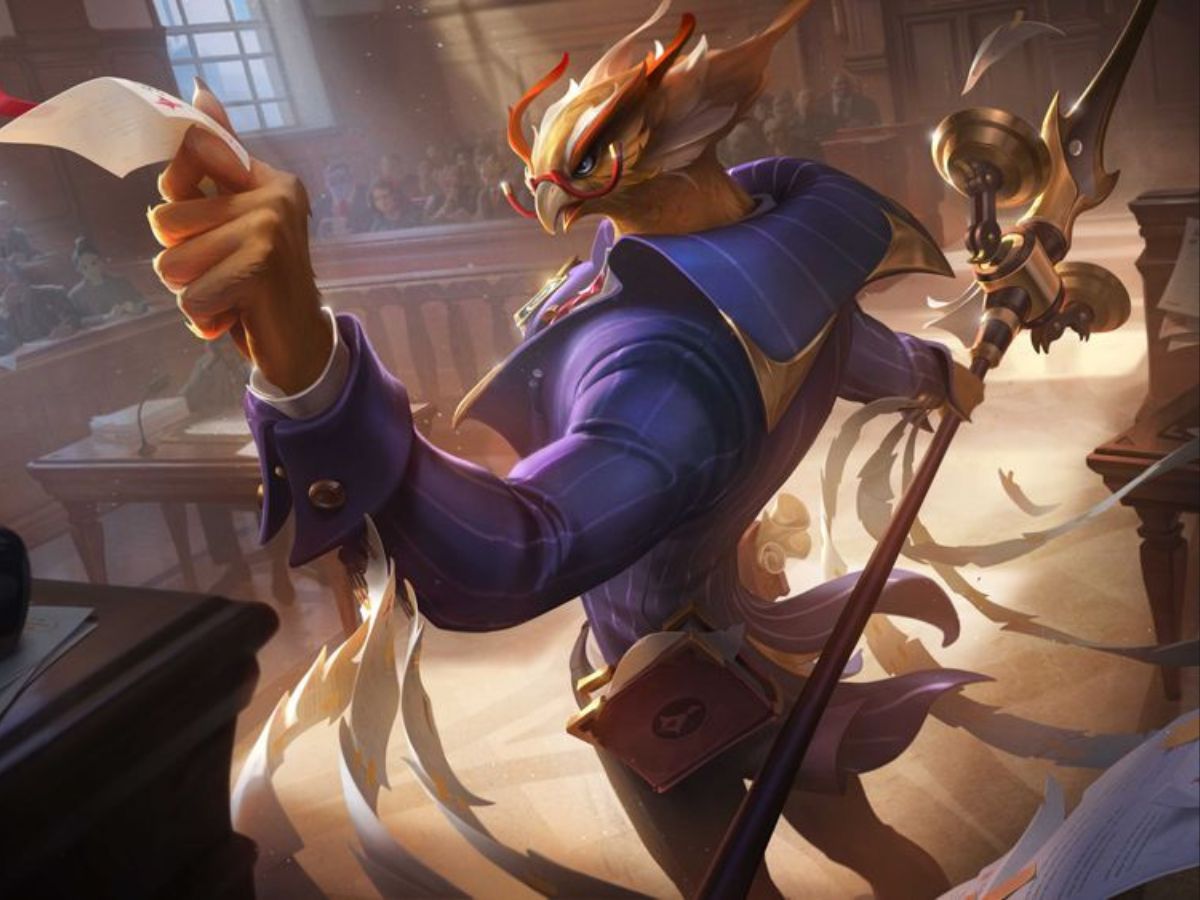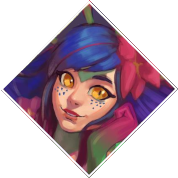
It can sometimes feel a little unpredictable, who’s going to get the next skin, who’s making it to the new skinline. One tricks for weirder champions are often left wondering when the spotlight will return to their champion. Instead of wondering, let’s delve a little on what goes into skin production, design and pre-production.
A while back, the strategy was much more, “Darius hasn’t gotten a skin in a while, what should we make?”, but the approach changed quite a bit ever since players seemed to enjoy skins in theme packs and lines much more. Skinlines also have the use of being able to use these themes to run bigger events. The approach has become closer to designing an event, along with a few standalone Legendary skins here and there. After the event is designed, artists look at the roster to see who would fit the theme best, or who would make for an interesting addition.
In that model, there is an extra step where it’s checked how many skins the champion already has, to not give Lux or Miss Fortune 6 skins per year.
Community votes also play a role in this, letting player input directly decide what kind of skins a champion should be getting, if they haven’t had one in a while.
Riot dev Andrei van Roon explained that there is certain criteria that needed to be met when choosing between skin lines. He added that one of the key factors is how well one of these collections did, compared to expectations and the marketing support given, such as music videos or trailers for the cosmetics.
“A skin line might be well-loved and perform well, but if we’ve used up all the good fits it makes more sense to focus on other themes instead,” Meddler added.
He also explained that even skin lines that consistently perform well, highlighting the Star Guardians set as an example, would not be oversaturated with new releases and that Riot would have to bring a “different spin” with every character.
Riot has also vaulted some of these themes before, as seen with the 2019 Sugar Rush skins, and shared that they would rather shift their efforts towards some of their more popular or new skin lines in future events.

A wide spread of vibes throughout the year is needed, so recent themes and skinlines are also taken into account when designing new events. For example, coming off of Anima Squad, it’s unlikely to see more PROJECT skins since they’re both futuristic, tech-based lines. Similarly, when looking at which thematics to use for bigger moments throughout the year, like the summer event or Worlds, Riot also looks for ones that have a world that can be deepened. While some thematics are popular, you can’t really build a universe around the Bee skinline.
An even spread of themes also helps regional demand. For example, North America and Europe seem to largely prefer moody, edgy skins, while Korea has a higher demand for elegant and beautiful skins.
If you're a fan of collecting unique skins or want access to accounts with exclusive cosmetics, check out our rare skins store. It’s the perfect way to elevate your League of Legends experience with iconic and hard-to-find skins.
In champion skin development, every champion is important. The goal is not to exclude any player base, ensuring that every champion, regardless of popularity, has the potential to receive a Legendary skin. To achieve this, player feedback is crucial. Before development begins, feedback is solicited to understand player preferences, allowing the team to focus on creating skins that are more likely to resonate with players.
Player feedback on skin features, especially when it comes to Legendary skins, is invaluable. Sometimes, a new feature might be developed with the expectation that it will be well-received, only to discover that other aspects are more exciting to players. As champions become more complex over time, delivering what matters most to players remains a priority.
For example, in "The State of Skins" (2020), it was highlighted that Amumu, an older champion, has 16 animations across his entire kit, while newer champions like Sett and Aphelios have 159 and 298 animations, respectively. This evolution underscores the importance of ensuring higher-tiered skins deliver more polish and excitement than lower-tier options.
However, the team avoids forcing skins into a one-size-fits-all mold for each tier. Doing so can lead to investing time in elements that don't enhance the skin for a particular champion, while limiting the ability to provide what players actually want. Listening to player feedback, both during the research phase and after release, helps fine-tune these features.
Another key factor in skin development is skin cooldowns, which vary based on a champion's popularity. This is the period between each skin release for a champion. A data science model considers factors such as pick rate, playrate, and past skin sales to calculate the target release date for each champion. For popular champions, the cooldown is shorter, making it even more important to create a standout skin when the cooldown is longer. For less-popular champions, the maximum cooldown is typically kept at 1,000 days, but the primary goal is to deliver a skin that players will appreciate, rather than just making any skin to fulfill that deadline. When a champion's cooldown approaches, the team seeks out suitable thematic opportunities, but they are careful not to force a skin that doesn't fit. If necessary, they would rather extend the cooldown slightly beyond 1,000 days than release a disappointing skin just to reset the cooldown timer.
After all, if players had to wait several years for a Skarner skin, and it turned out to be something like a "Ducks" theme, the response would likely be one of frustration. This happened also with Illaoi, where a “Used Car Salesperson Illaoi” topped polls taken around the time Illaoi’s cooldown was near its end, but it was scrapped for the same reasons..
After the initial idea has been refined, it’s time to bring the vision to life through concept art. This is where the skin begins to take shape visually. Concept artists start by creating rough sketches that explore different interpretations of the theme. They experiment with different outfits, color schemes, and visual motifs, always keeping the champion’s core identity in mind.
Various things have to be taken into account. The initial motifs of the character, the weight of the animations, their visual design, and more. Characters that swing heavy weapons around can’t just be given lighter ones. Some champions have design components that just can’t be danced around and need to be incorporated into every skin. Examples include Garen’s armor, Ryze’s scroll, Gnar’s boomerang and Zyra’s tentacle-like vines around her figure. All of these things contribute to a champion’s silhoutte, and generally, a good skin design will breathe a new design to the champion without impacting their silhouette and clarity. The champion still needs to be clearly identifiable as who they are, for aesthetic and gameplay purposes.
During this phase, the concept artist may create several different versions of the skin. Each version might explore a different aspect of the theme, such as a futuristic version, a mystical version, or a battle-hardened version. The goal is to push the boundaries of the concept while still maintaining a strong connection to the champion’s original design.
It’s largely unknown how many iterations in development most skins have gone through. The K/DA skins, for example, had dozens upon dozens of iterations that were scratched off and redone, since there was so much weight behind a K-Pop group skinline. Some of these concepts would be recycled into the K/DA ALL OUT skinline.
Once a base design is decided on, the reference sheets are passed on to hired and freelance artists.
It’s often the responsibility of 2D artists to do the actual framing and composition in the skin splash-art. It’s not rare for Riot to knock out several splashes in one large painting that can also be used for event promotional material. It’s not uncommon for artists to go through several sketches, specially for bigger pieces, until they get the thumbs-up from the design team—who, even in this phase, still work very closely on refining the design.
A lot of these 2D artists have their own sites, ArtStations and DeviantArts that you can check out for yourself! Generally, the League wiki will contain the artist’s handle for a specific skin.
For example, Chengwei Pan is credited with splash arts such as Nilah, Viego and Kai’Sa, and an immense amount of skins along with some fanart works thrown about. Pandart Studio is an entire studio often contracted by Riot Games for League of Legends, Valorant and Legends of Runeterra art. They’re even often hired by Blizzard in their events.
It’s not too hard to search for the original artists of a splash-art or 3D model. Riot Games doesn’t restrict crediting their artists, and it’s not rare for the artists and studios to publicly release their concept art and full 3D models to the public.
Once the splash-art has been designed, the concept, reference sheet and splash art are sent to a 3D modeler, who once again, can quite often be a freelance artist instead of somebody who works directly in Riot Games. 3D model artists have to be extremely mindful of League’s isometric nature and the existing champion’s animations. First, high polygon count 3D models are made in sculpting programs like Zbrush or 3DMAX, and then these refined models are decimated down to be packaged into the game.
In the same stage of production, the visual effects for the skin are often drawn and translated to a 3D plane, then tweaked to guarantee visual clarity in game. Again, things need to look different from the base skin while still retaining their silhouettes and audio clues. Many different sections of the dev team collaborate with eachother to give the final OK to any skin released live.
Finally, a skin is teased and marketed in social media or through an event announcement, then released into the PBE, and eventually the live game servers.
Don’t have the time to grind? Our level 30+ unranked accounts offer a fresh start, allowing you to dive straight into customizing your account with new skins and champions.
In the latest dev update, Meddler and Pabro announced that, going forward, skin production will be less centered on expanding existing skinlines, and refocusing a bit more on a champion-first approach. An example of this is Azir’s upcoming and yet-to-be-named attorney skin.

It’s unlikely this will mean skinlines will be less prominent, but it will mean we’ll be seeing skins that are specifically tailored for champions. It gives more room for skins that flip a design over their head, skins that directly reference a champion’s lore rather than an alternate timeline or separate universe, and skins that are just a joke about the champion taken to the absurd.
